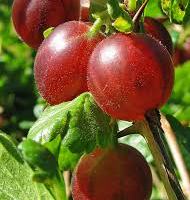Nigel Boldero aka 'Old School Gardener'
-
Join 3,827 other subscribers
Background information
My articles classified..
- 12 tips to save time in the garden (12)
- A musing: odd thoughts (21)
- A Select Vietnamese flora (3)
- A-Z of Garden Trees (23)
- A-Z of Perennials (26)
- Aussie Greens- gardens, parks and open spaces visited in trips to Australia (2)
- Blickling Hall- rebirth of the Walled Garden (88)
- Blogging (13)
- Climate change and gardening (68)
- Community Gardening (114)
- Dear Walter – letters/info from Old School Garden (81)
- Design (394)
- Design My Garden – Tips to improve your plot (12)
- Eat Me: guides to growing and using food plants (5)
- Feature plants (189)
- Floral Roundabouts (4)
- Four Seasons in One Day- series on climate change and gardening (5)
- Gardening and Gardeners: historical snapshots (42)
- Gardening equipment and tools (67)
- Gardening techniques (392)
- Gardening Therapy (3)
- GQT: your gardening queries answered (43)
- Great Gardens (180)
- Great Gardens: Scotland 2016 (6)
- Grow your own food (157)
- Growing Children- series on school gardening (7)
- Haveringland Churchyard (1)
- Health (15)
- Hebridean Hop- a tour of some Scottish isles (4)
- Heritage Gardens & gardening (285)
- Historic landscapes (129)
- John Evelyn's Monthly in the Garden (12)
- Local Food (21)
- Monthly Top ten gardening tips (12)
- Mrs. Murphy's Laws of Gardening (14)
- New Zealand 2019 (19)
- Norfolk in poetry- Jack Kett (13)
- Open Spaces (54)
- Over My Head- looking up at architectural detailing (8)
- Permaculture and sustainability (8)
- Pests and diseases (28)
- PicPosts- great photographs (811)
- Plantax- the stories behind plant names (21)
- Planting Patterns- wow factor pictures (41)
- Play (205)
- Playful Landscapes- examples (9)
- Portuguese Gardens (31)
- Power of 7- tips (24)
- Recycling projects (111)
- School and childrens' Gardening (82)
- Soils and soil improvement (62)
- Style Counsel: snippets on garden styles (13)
- The Essence of Gardening in 12 Objects (12)
- This and that (1,610)
- West Country Gardens (24)
- Wildlife and Nature (419)
-
Recent Posts
- Fighting to Reduce Climate Change Anxiety
- Gardening 101 for Beekeepers
- (no title)
- Home Composting Guide
- Slow down and embrace nature – how to create better cities when the pandemic is over
- Spring Cleanup Checklist for Yard and Garden
- #FungiFriday: a grave situation — Daniel Greenwood
- What did the Nettlefolds do for Christmas? — Winterbourne House and Garden
- Great estates: the changing role of trees in the municipal housing landscape — Municipal Dreams
- Collaborative approaches — The official blog for the North York Moors National Park
- Jekka’s Favourite 12 Herbs for Christmas — Jekka’s – Jekka’s Blogs “All About Herbs”
- A Chance Encounter — PlayGroundology
- Edinburgh’s 1919 Act Housing, Part II: ‘Healthy Houses for the People is the Best Public Health Insurance’ — Municipal Dreams
- The Science of Sustainability — Specifier Review
- Never Gets Old — PlayGroundology
- Say Hello to the 2020 Collections Trainees — Shine A Light
- Council Housing in Preston, Part II: ‘Changing Fashions in Planning’ — Municipal Dreams
- Preston’s Council Housing, Part I to 1939: ‘Compactness, Convenience and Taste’ — Municipal Dreams
- ‘Green Care’ – a positive push from Covid
- Climate projections show extreme UK’s weather will become even more extreme — Official blog of the Met Office news team
- Cottingham’s Council Housing, Part II from 1930: New Forms of Housing Provision — Municipal Dreams
- Decorative Arched Footbridge, Desert Wash, East Ruston, Norfolk — Susan Rushton
- Local Candidates Asked About Well-being of Children — PlayGroundology
- The Role of the Women’s Housing Sub-Committee: ‘Homes fit for Heroines’ — Municipal Dreams
- Taking advantage of good weather: Getting loads of stuff done — Vanha Talo Suomi
- The Susans Cope With Drought — gardeninacity
- What’s up? — NewEnglandGardenAndThread
- Are You Sitting Comfortably – 15 — greenbenchramblings
- Climate Change: The perfect fuel for wildfires? — Official blog of the Met Office news team
- ‘Till we have built Jerusalem in England’s green and pleasant land’: Women’s Influence on State Housing in the Era of World War 1 and After — Municipal Dreams
- Storm Alex, so why not Storm Aiden? — Official blog of the Met Office news team
- October in the Garden: Top 10 Tips
- Green Flag Award- the Judge’s Gardens Competition
- It’s gardener vs. gardener season — GardenRant
- Darwen’s Jubilee Tower — Susan Rushton
- Jekka’s 6 top steps to “Grow On” your herbs — Jekka’s – Jekka’s Blogs “All About Herbs”
- If Summer Could Go On Forever — leaf and twig
- Plant Spotlight: Salvia involucrata ‘Hadspen’ — Winterbourne House and Garden
- The Garden at the begining of Autumn — The Cynical Gardener
- Will Covid-19 change the future of building design? — Specifier Review
- Atlantic tropical storms forming at a record pace — Official blog of the Met Office news team
- The Sussex Weald: where all the mushrooms are — Daniel Greenwood
- Report on nature-based solutions for the climate emergency published — Specifier Review
- My Lockdown Re(dis)covery
- End of the Dog Days — Vanha Talo Suomi
- Transformational public service development plans approved in West Suffolk — Specifier Review
- How changing urban streetscapes reflect post-COVID 19 outdoor cultural trends — Specifier Review
- Council Housing in Greenock, Part II, 1918-1945: their ‘Ain Wee House’ — Municipal Dreams
- #FungiFriday: weeping conk at Ickworth Park — Daniel Greenwood
- Quinta de Ventozelo — Salt of Portugal
Recent Comments
Top Posts & Pages
Favourite Categories Cloud
A-Z of Garden Trees A-Z of Perennials Blickling Hall- rebirth of the Walled Garden Climate change and gardening Community Gardening Dear Walter - letters/info from Old School Garden Design Feature plants Gardening and Gardeners: historical snapshots Gardening equipment and tools Gardening techniques GQT: your gardening queries answered Great Gardens Grow your own food Heritage Gardens & gardening Historic landscapes Open Spaces Pests and diseases PicPosts- great photographs Plantax- the stories behind plant names Planting Patterns- wow factor pictures Play Portuguese Gardens Power of 7- tips Recycling projects School and childrens' Gardening Soils and soil improvement This and that West Country Gardens Wildlife and NatureBlog Stats
- 518,440 hits
Archives
- March 2023 (1)
- January 2022 (1)
- September 2021 (1)
- August 2021 (1)
- April 2021 (1)
- March 2021 (1)
- December 2020 (8)
- November 2020 (5)
- October 2020 (13)
- September 2020 (25)
- August 2020 (4)
- July 2020 (12)
- June 2020 (25)
- May 2020 (12)
- April 2020 (15)
- March 2020 (16)
- February 2020 (13)
- January 2020 (50)
- December 2019 (17)
- November 2019 (6)
- October 2019 (4)
- September 2019 (5)
- August 2019 (6)
- June 2019 (9)
- May 2019 (9)
- April 2019 (3)
- March 2019 (9)
- January 2019 (22)
- December 2018 (16)
- November 2018 (16)
- October 2018 (7)
- September 2018 (17)
- August 2018 (17)
- July 2018 (13)
- June 2018 (9)
- May 2018 (12)
- April 2018 (22)
- March 2018 (21)
- February 2018 (22)
- January 2018 (26)
- December 2017 (30)
- November 2017 (26)
- October 2017 (30)
- September 2017 (32)
- August 2017 (30)
- July 2017 (30)
- June 2017 (32)
- May 2017 (31)
- April 2017 (27)
- March 2017 (29)
- February 2017 (27)
- January 2017 (33)
- December 2016 (30)
- November 2016 (28)
- October 2016 (33)
- September 2016 (32)
- August 2016 (36)
- July 2016 (43)
- June 2016 (29)
- May 2016 (33)
- April 2016 (38)
- March 2016 (40)
- February 2016 (35)
- January 2016 (46)
- December 2015 (43)
- November 2015 (37)
- October 2015 (39)
- September 2015 (39)
- August 2015 (30)
- July 2015 (22)
- June 2015 (33)
- May 2015 (37)
- April 2015 (35)
- March 2015 (40)
- February 2015 (39)
- January 2015 (54)
- December 2014 (54)
- November 2014 (50)
- October 2014 (58)
- September 2014 (35)
- August 2014 (58)
- July 2014 (72)
- June 2014 (58)
- May 2014 (65)
- April 2014 (47)
- March 2014 (59)
- February 2014 (73)
- January 2014 (60)
- December 2013 (51)
- November 2013 (100)
- October 2013 (74)
- September 2013 (63)
- August 2013 (52)
- July 2013 (79)
- June 2013 (83)
- May 2013 (104)
- April 2013 (117)
- March 2013 (173)
- February 2013 (104)
- January 2013 (21)
- December 2012 (2)
Some of my blog followers
Blogs I Follow
- Finding Nature
- Families Connect
- Norfolk Green Care Network
- Discover WordPress
- Susan Rushton
- Daniel Greenwood
- Alphabet Ravine
- MU Library Treasures
- TIME GENTS
- Vanha Talo Suomi
- How I Killed Betty!
- Bits & Tidbits
- Rambling in the Garden
- The Interpretation Game
- pbmGarden
- SISSINGHURST GARDEN
- Deep Green Permaculture
- BloominBootiful
- Winterbourne House and Garden
- greygoosedotco.wordpress.com/
Top clicks from my blog
Calendar of my posts

 So many trees beginning with ‘P’- which to choose? My choice is a tree that poses a dilemma- to prune or not to prune? If you do, you will encourage massive foliage which is a fabulously exotic addition to any garden. Alternatively, don’t and you get some wonderful flowers…the choice is yours.
So many trees beginning with ‘P’- which to choose? My choice is a tree that poses a dilemma- to prune or not to prune? If you do, you will encourage massive foliage which is a fabulously exotic addition to any garden. Alternatively, don’t and you get some wonderful flowers…the choice is yours.






 Further information:
Further information:





Is this sometimes called the foxglove tree?
Yep- Foxglove Tree, Empress Tree, Princess Tree